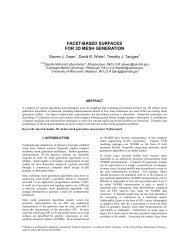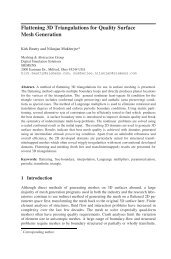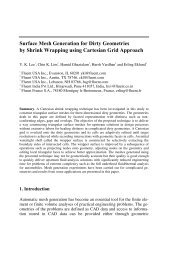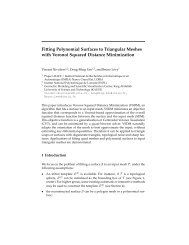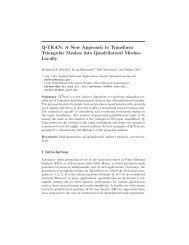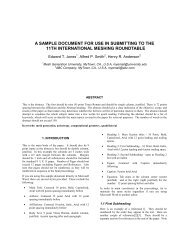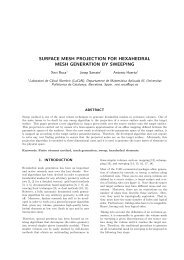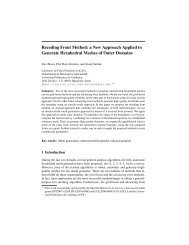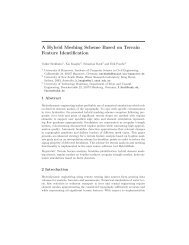CPU-GPU Algorithms for Triangular Surface Mesh Simplification
CPU-GPU Algorithms for Triangular Surface Mesh Simplification
CPU-GPU Algorithms for Triangular Surface Mesh Simplification
You also want an ePaper? Increase the reach of your titles
YUMPU automatically turns print PDFs into web optimized ePapers that Google loves.
<strong>CPU</strong>-<strong>GPU</strong> <strong>Algorithms</strong> <strong>for</strong> <strong>Triangular</strong> <strong>Surface</strong> <strong>Mesh</strong> <strong>Simplification</strong> 13the percentages of vertex and face simplification, respectively, in these tables.The amount of simplification per<strong>for</strong>med each iteration decreases. This suggeststhat as the vertex and element counts increase, the decrease in runningtime achieved by using the <strong>GPU</strong> simplification algorithm instead of the <strong>CPU</strong>simplification algorithm increases as well.To examine the effects of splitting the mesh simplification workload betweenthe <strong>CPU</strong> and the <strong>GPU</strong> using the inverse reduction algorithm, werecorded the time spent during the simplification process <strong>for</strong> various <strong>CPU</strong>-<strong>GPU</strong> splits on all test cases. We tested the following <strong>CPU</strong>-<strong>GPU</strong> workloadsplits: 100-0, 95-5, 90-10, . . . , and 0-100. The time taken in seconds <strong>for</strong> the<strong>CPU</strong>-<strong>GPU</strong> splits can be seen in Figure 7. The proportion of running timespent in the <strong>GPU</strong> <strong>for</strong> the tested is shown in Table 7. The <strong>GPU</strong> memory usage<strong>for</strong> the tested splits is shown in Table 3.(a) Bunny(b) GargoyleFig. 7. The time taken to simplify each test case <strong>for</strong> every split using the <strong>CPU</strong>-<strong>GPU</strong>inverse reduction algorithm. As the <strong>CPU</strong>-<strong>GPU</strong> split increases, the <strong>CPU</strong> workloadincreases, and the <strong>GPU</strong> workload decreases.The <strong>CPU</strong>-<strong>GPU</strong> inverse reduction algorithm shows an increase in runningtime on the horse mesh, whereas it shows a decrease in running time onthe armadillo, bunny, gargoyle, hand, and kitten meshes with respect to anincreasing workload on the <strong>GPU</strong>. If the mesh is large, the time taken decreasesas the <strong>GPU</strong> workload increases. If the mesh is small, the reverse trend holds.This is due to the extra time taken <strong>for</strong> memory allocation in the <strong>GPU</strong> and<strong>for</strong> copying the data from main memory to the <strong>GPU</strong> cache, shown in Table 3,in addition to the time required <strong>for</strong> simplification. Also, because the inversereduction algorithm is more efficient than the naïve marking algorithm, wesee that the time taken to simplify the bunny mesh decreases as the <strong>GPU</strong>workload increases, now decreasing anywhere between 5.55% <strong>for</strong> the bunnymesh to 11.48% <strong>for</strong> the gargoyle mesh when the <strong>GPU</strong> is given the full workloadwhen compared to the naïve algorithm.



